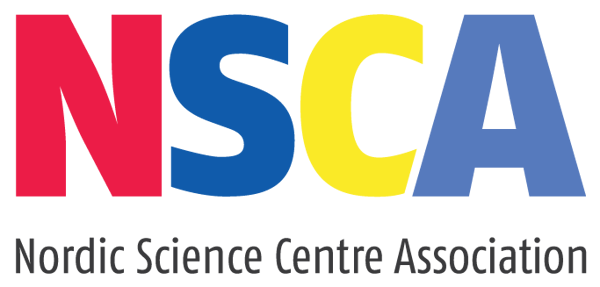This is the English translation of the NCSA charter that was originally written in Swedish.
§ 1 Name
Nordic Science Centre Association, hereby referred to as the association, is a cooperative organisation of science centres in the Nordic countries and the Baltic states. Science centres are here interpreted as exhibition and activity centres, whose goal is the popularisation of science and whose aim is to teach through interactive objects and demonstrations. The official language of the association is English.
§ 2 Objective
The association functions as a liaison between the members and strives towards developing the cooperation between the science centres of the Nordic countries and the Baltic states. To actualise the goal the association has initiated the following resources:
- Publication, if possible each year, of an address and telephone catalogue listing each member as well as contact persons.
- Publication of a newsletter at regular intervals.
- Organisation of NSCA conferences on a minimum bi-annual basis.
- Promoting and supporting and when necessary administrating, concrete cooperation projects between members, for example touring exhibitions, production of audio visual materials, production of educational toys, etc.
- Function, at the request of the members, as a liaison with international organisations.
§ 3 Members
All science centres and institutions that are consistent with the definition of §1 can join the Association, independent of the form of organisation or legal status. Projects that aim to establish a science centre can also join the Association. By a written application to the Board and by paying the membership fee, applicants will join the Association. Thereafter, membership has to be confirmed by voting at the next General Council. An announcement of a member's resignation should as well be written. A member that for two consecutive years fail to pay the fee for membership can be expelled by the Board.
§ 4 Operational Period
The Association’s operational period spans over two years starting October 1st and ending September 30th.
§ 5 General Meeting
The Association’s agenda is decided through a general meeting scheduled every other year within the period of October-December. The meeting is called by the board of directors by means of a written request at least one month prior to the meeting. Each member has the right to be represented by a substitute at the meeting and each member has one vote. Each meeting will, at the very least, consider the following:
- The board of directors report for the past operational period.
- Establishment of dues for the coming operational period.
- Plan and budget for the organisations coming operational period.
- Election of chairman and board of directors for the coming operational period.
- Other business.
The board directors have the right to call a special general meeting with due cause.
§ 6 Board of Directors
The board of directors consists of one representative from each country with members in the association. From the board of directors, a chairman is elected at the general meeting. The board of directors acts in all decision matters during the period that lies between general meetings. The chairman is responsible for calling meetings of the board. A deputy chairman may also be elected at the board’s discretion.
§ 7 Chairman
The chairman is the leader of the board of directors and the organisation. The chairman has the right to organise the union’s administrative and economic functions in the most efficient means possible. The chairmanship should circulate between the member countries.
§ 8 Accountants
The chairman hires authorised accountants to manage the association’s bookkeeping needs.
§ 9 Endorsement
Signature endorsement of the association’s name is give to the chairman and any other persons granted power of attorney by the board of directors.
§ 10 Dissolution of the association
The dissolution of the association will be decided at a general meeting with a minimum ¾ majority of the votes given. Due process requires at least 10 members to request dissolution before the board must include the case in the general meeting agenda. If dissolution is approved, then the members at the general meeting have the right to decide the distribution of the association’s assets.
